There is a saying, “In Gyeongju, relics are excavated whenever you dig in the ground.” Silla was an ancient kingdom in the Korean Peninsula that lasted nearly a thousand years from 57 BC to 935 AD. Gyeongju was the capital of Silla throughout its existence. Therefore, many Silla-era relics and remains exist in Gyeongju, and this saying reflects the fact that relics and remains are still being uncovered.
The UOS Times previously covered , especially Hwangridan-gil, in our March issue. For April, The UOS Times would like to introduce readers to Gyeongju, the capital of Silla, the kingdom that lasted for a millennium, and Silla’s history through its relics in Gyeongju.
Cheomseongdae

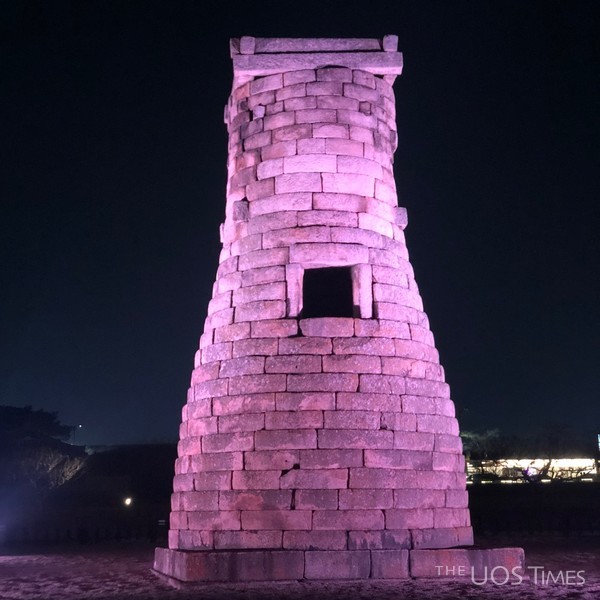
Cheomseongdae, the iconic relic of Gyeongju, is located in Wolseong District, the site of Silla’s royal palace. Cheomseongdae, known as the oldest astronomical observatory in East Asia, is presumed to have been built during the reign of Queen Seondeok(632-647) of Silla. Reflecting the remarkable level of technology Silla achieved in astronomical science, it is a valuable cultural property. According to historical records, celestial observers were supposed to climb into Cheomseongdae through a window by climbing a ladder placed outside, then climbed to the top for a better view of the sky and the stars.
Woljeonggyo Bridge
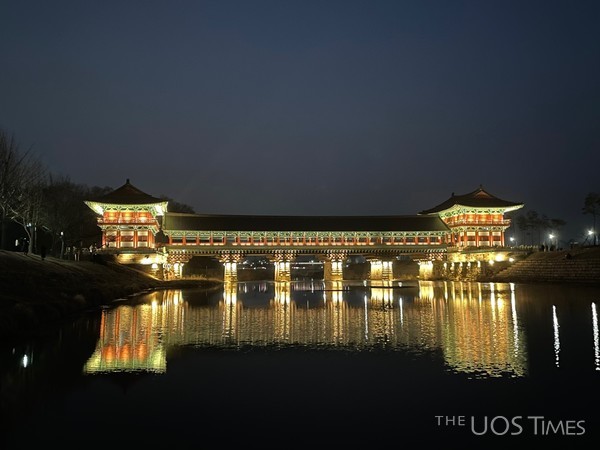
Woljeonggyo Bridge was built in 760 to connect Wolseong Palace, the royal palace of Silla, and Namsan Mountain. It was reconstructed after it was demolished in a war at an unknown date. By the time the restoration started, the wooden structure had already disappeared and only the stonework to support the bottom of the bridge remained. Woljeonggyo Bridge was restored in a new form in April 2018 with a roof over the bridge, which was a new type of bridge during the Silla period.
Daereungwon
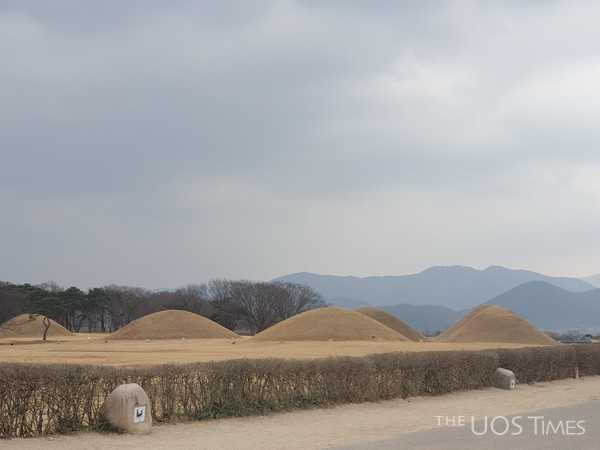
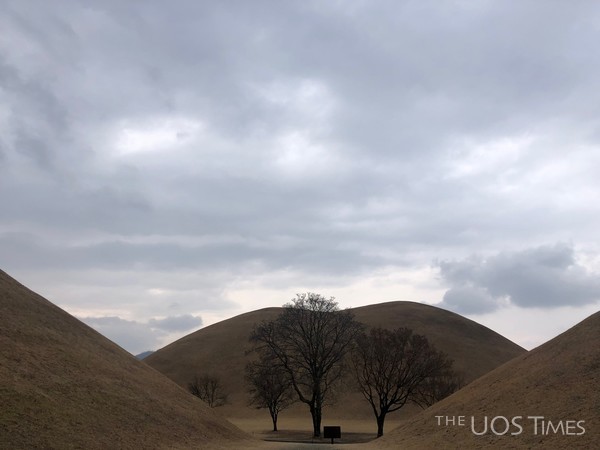
Ancient tombs are scattered around Daereungwon, including 23 Silla-era tombs. The Silla tomb located in Daereungwon is a representative ancient tomb of Silla for the state’s kings and nobles. These tombs take the style of a wooden chamber tomb covered by a stone mound, and it is supposed that most of the tombs remain unrobbed because their construction style makes it difficult to break into them. These tombs are important relics that have been investigated since the Japanese colonial era; archeologists have excavated metal artifacts such as gold crowns and numerous pieces of pottery and household goods that provide crucial data for understanding the culture of ancient Silla. In particular, Cheonmachong Tomb, where people can see inside, is very popular among tourists.
Cheonmachong Tomb
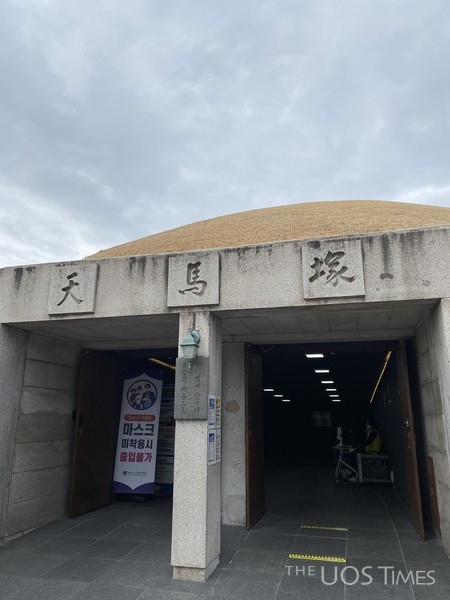
“Cheonmachong” is named after the famous “Jangni cheonmado” (Painting of a Heavenly Horse on a Saddle Flap) excavated from the tomb. Cheonmachong Tomb is the representative wooden chamber tomb with a stone mound of the Silla period. It is believed to have been built around the late 5th or early 6th century. It is presumed to be the tomb of a king or someone of equivalent stature. The tomb was constructed by placing wooden coffins and funerary objects on a flat plot of land, stacking wood, stones, and clay around them, and covering it all in high earth mounds. More than 11,500 artifacts have been excavated from Cheonmachong Tomb, including a gold crown.
National Gyeongju Museum
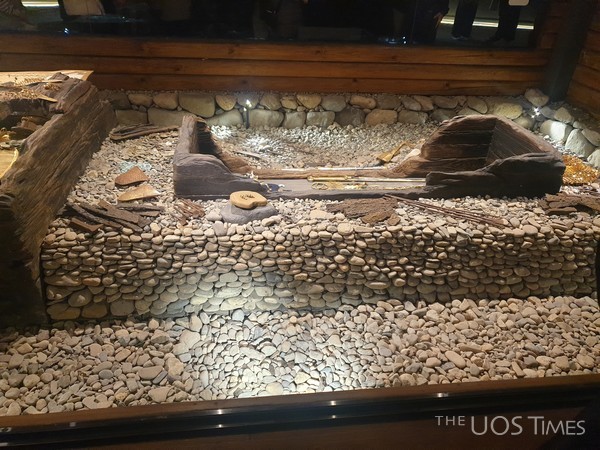
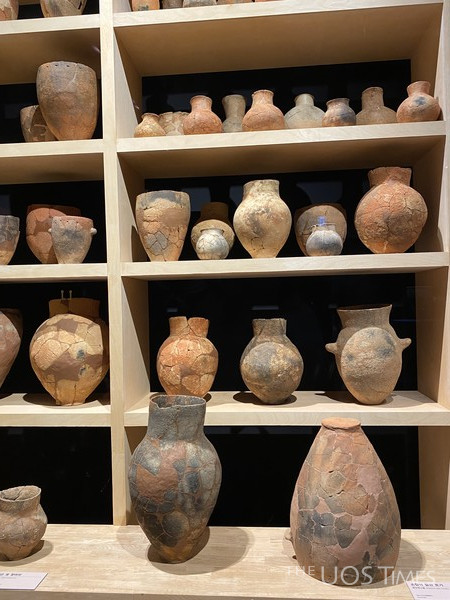
National Gyeongju Museum is a representative museum in Gyeongju with comprehensive exhibits of a variety of Silla-era artifacts. Silla History Gallery, the main building of the National Gyeongju Museum, exhibits relics that reveal the developmental process of Silla history, from pottery used in prehistoric times to metal crafts of the Silla period. There are also items from the Western World that show international trade relations during the Silla period. In addition, various relics that show the development of architecture during the Silla period are on display as well.
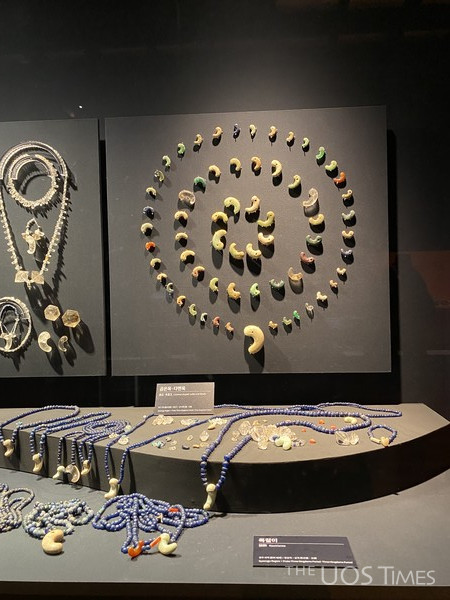
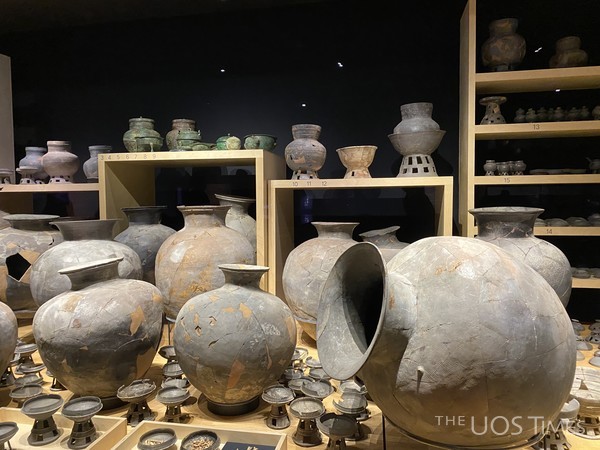
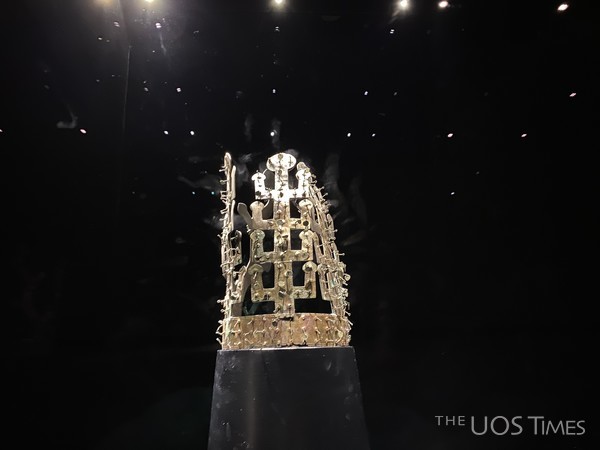
The National Gyeongju Museum tells us that Silla was the “Golden Country.” In the National Gyeongju Museum, visitors can see various golden crafts made in Silla, including the Gold Crown from Cheonmachong Tomb. Moreover, as Silla was a Buddhist kingdom, Buddhist art was highly mature in Silla. At the National Gyeongju Museum, many Buddhist artworks are on display, including Buddha statues and stone pagodas made in Silla. In addition, visitors can learn about Silla art and the history of Wolji, a famous pond. Readers who want to learn about Silla should make a point of visiting the National Gyeongju Museum.
Sacred Bell of Great King Seongdeok

On exhibit in the National Gyeongju Museum is the Sacred Bell of Great King Seongdeok. The bell, originally located in a temple called Bongdeoksa, was commissioned by King Gyeongdeok in 771 to extoll the virtues of his father, King Seongdeok. The bell is also typically known as the “Emmile Bell.” This name was given to the bell because of a story that a baby was thrown into the molten iron as an offering to Buddha when the bell was being cast. The ringing of the bell thus sounds like a baby weeping. At the top of the bell is a soundbox that boosts its resonance, a structure unique to Korean bells.
Gyeongju has a wide variety of relics and historical sites, as acknowledged by UNESCO designating the entire city as a World Heritage Site. Gyeongju is also a famous tourist city, where people can feel the atmosphere of Silla throughout the city. The UOS Times recommends that anyone who is interested in Silla, the country that lasted the longest in Korea, visit Gyeongju and see the relics introduced in this article as well as the many others on display in the city.

